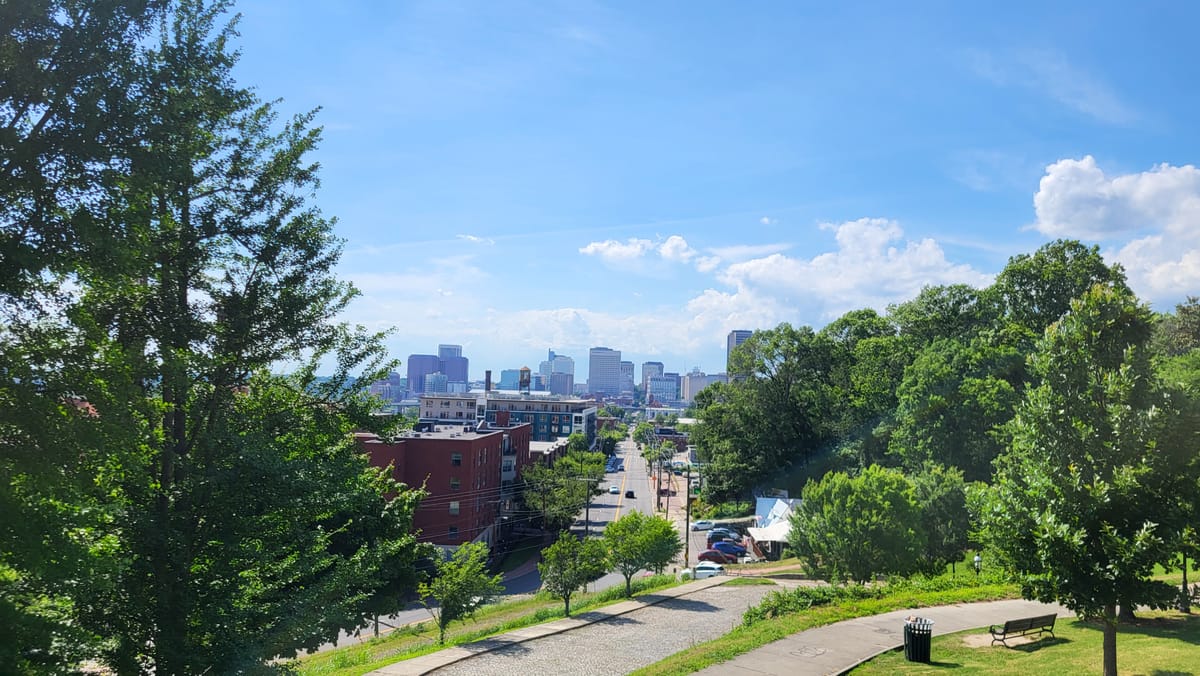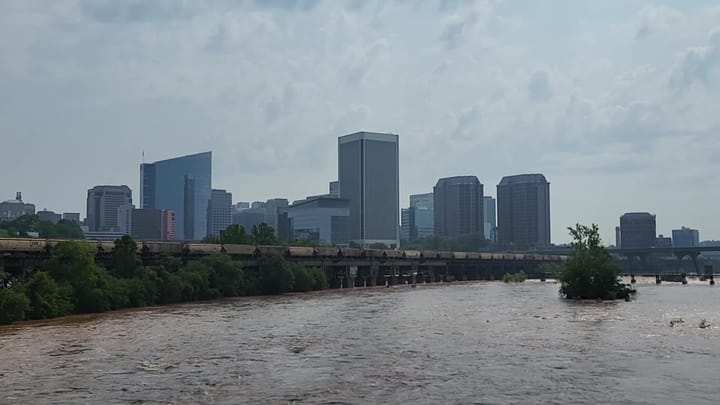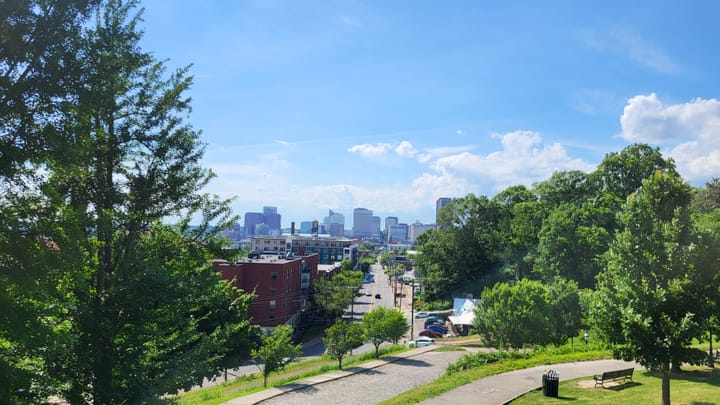
May finishes wet in RVA, and here comes hurricane season
Rain will continue through Wednesday morning in Richmond, then a relatively drier period will follow, but it will be several days before Richmond truly dries out and temperatures are consistently near or above normal.
As May comes to a close, the normal high temperature has reached 80 degrees (and will remain 80 or higher until September 20), meaning Wednesday will be the 9th consecutive day cooler than normal in Richmond.
For short term weather, some breaks of sun return on Wednesday afternoon, then Thursday looks dry and briefly warmer, back into the lower 80s.
Another significant system comes through on Friday, sending us a few rounds of showers or thunderstorms. A weaker one follows on Saturday, and while it probably just brings a lot of clouds, it is too early to rule out any showers. Both of those days go into the upper 70s.
A more legitimate dry period begins Sunday and will continue into Friday of next week. No rain is expected at all during those six days. Afternoons will get a little bit warmer each day, into the upper 80s to near 90 Wednesday through Friday.
We have been fortunate to escape a lot of early season heat. Typically, Richmond reaches 90 degrees three times before the end of May. This year, it has only happened once — May 16, and it will not reach 90 degrees again before June.
Although there are signs of a warmer spell during the second week of June, an especially hot and dry period is not expected. Regardless, the last four months have put us in a good position regarding soil moisture and stream flow and will help us manage the drier period to start next month.
After an especially wet February, both March and April were slightly wetter than normal, and May has already brought more than 4 inches of rain. Through May 26, Richmond has had 123% of normal rain in 2025, a good place to be preparing for June and July, when yards and farms can dry out quickly in the long summer days.
Tropical Times Return
Hurricane season starts June 1st, and it is expected to be an active season — with a few more storms than normal. But remember, the core of the season is from the middle of August to the middle of October, when the water across the Atlantic Basin (including the Gulf of Mexico and the Caribbean Sea) is warmest.
An average season has about 14 tropical storms becoming strong enough to take on names, with half of those going on to become full hurricanes — where the strongest sustained winds around the storm’s eye are at least 74 mph.
Although wind damage does occur in Richmond from tropical systems, rain and flooding from them tend to leave the deepest scars.
Richmond’s worst James River floods of the modern era came from topical systems. Camille (1969) and Agnes (1972) were the worst, with third place coming from a hybrid system that had tropical moisture involved from Juan in 1985. All three of those James River crests were higher than 25 feet at the Huguenot Bridge gauging station, where flood stage is 12 feet. Not surprisingly, these floods helped spark the idea of the floodwall which has been in place since 1995.
We have been nowhere near those James River levels in a long time. During the last 25 years, the highest crest was 18.7 feet, coming in February 2003, far down the list in 21st place.
Hurricanes and climate change
Rainfall in hurricanes is tending to get heavier as the climate has warmed. The core reason is based on straightforward thermodynamics: a warmer atmosphere can evaporate more water into it, returning it as heavier rainfall. Another aspect of the warming climate is warmer ocean water, and because warmer ocean water is the fuel for hurricanes, they can also intensify more rapidly than a few decades ago.
Even though the warming climate may not produce more hurricanes, those two factors can make them more damaging. Coupled with a rising sea level, it also means coastal flooding from the storm surge can be deeper and push farther inland.
All good reasons to take these storms seriously, whether in Richmond, at the coast, or somewhere in between.






